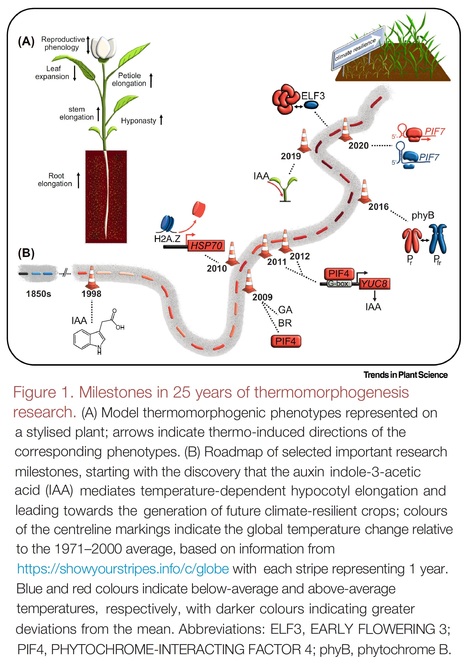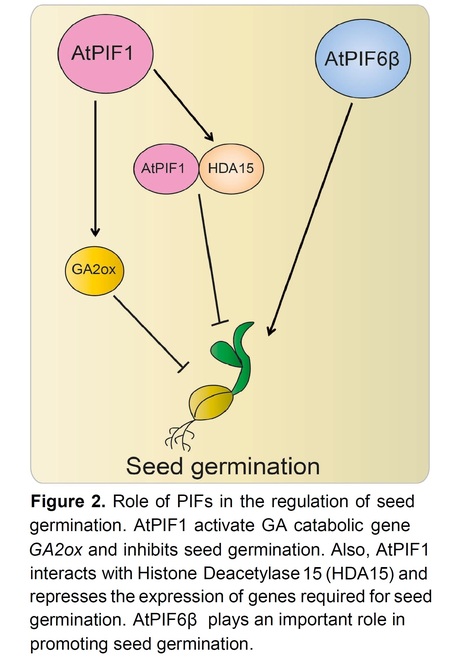Authors: Marcel Quint, Carolin Delker, Sureshkumar Balasubramanian, Martin Balcerowicz, Jorge J. Casal, Christian Danve M. Castroverde, Meng Chen, Xuemei Chen, Ive De Smet, Christian Fankhauser, Keara A. Franklin, Karen J. Halliday, Scott Hayes, Danhua Jiang, Jae-Hoon Jung, Eirini Kaiserli, S. Vinod Kumar, Daniel Maag, Eunkyoo Oh, Chung-Mo Park, Steven Penfield, Giorgio Perrella, Salomé Prat, Rodrigo S. Reis, Philip A. Wigge, Björn C. Willige and Martijn van Zanten.
Trends in Plant Science (2023)
Abstract: "In 1998, Bill Gray and colleagues showed that warm temperatures trigger arabidopsis hypocotyl elongation in an auxin-dependent manner. This laid the foundation for a vibrant research discipline. With several active members of the ‘thermomorphogenesis’ community, we here reflect on 25 years of elevated ambient temperature research and look to the future."
 Your new post is loading...
Your new post is loading...
 Your new post is loading...
Your new post is loading...













